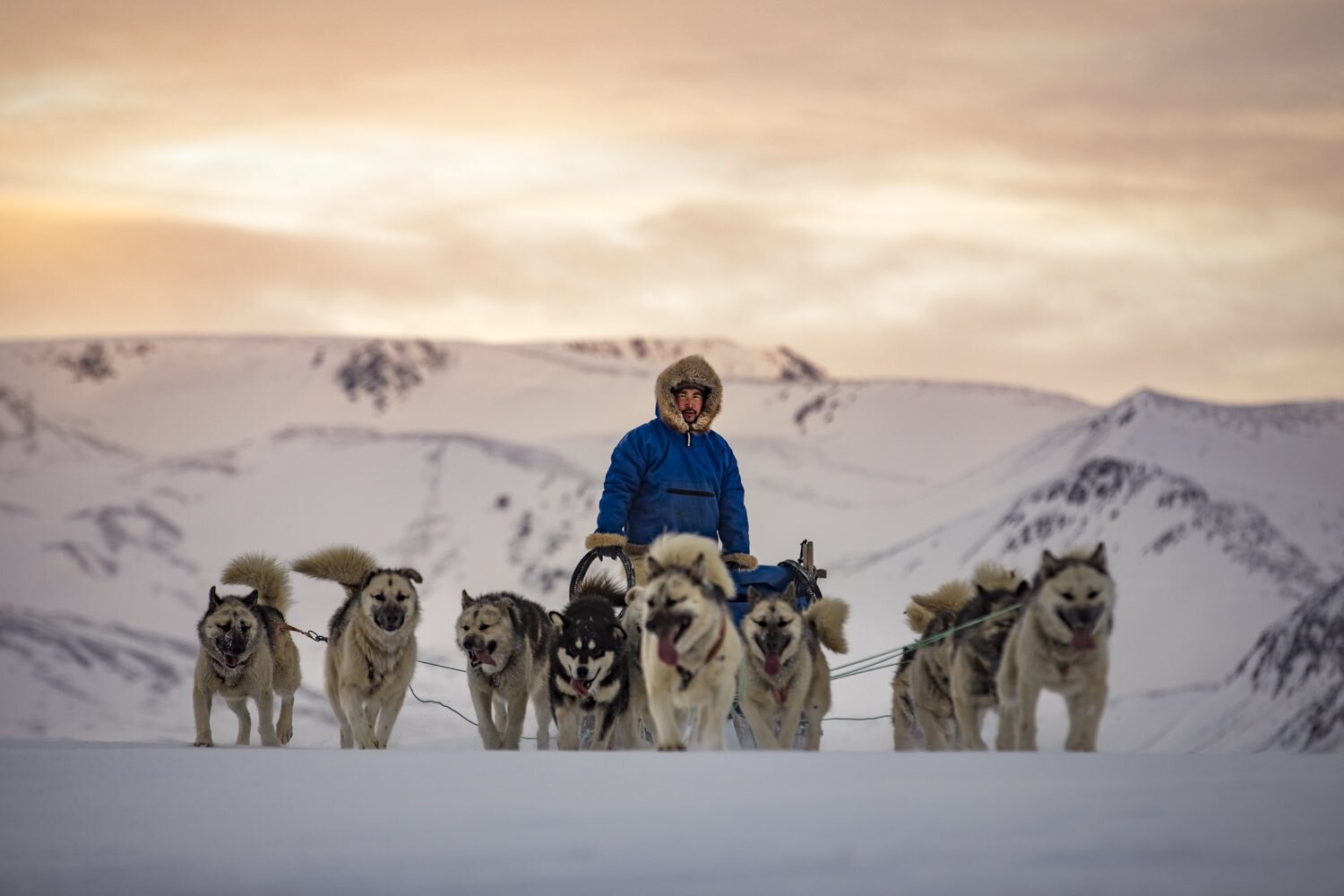
ITTOQQORTOORMIIT: POLAR BEAR INVASION
In the remote Greenlandic settlement of Ittoqqortoormiit, climate change is forcing polar bears off the sea ice and into town. Every morning the town patrols for polar bears, but the issue is complicated by hunting quotas and the settlement’s relationship with distant Copenhagen.
Ice is a defining factor in Ittoqqortoormiit, a village of just over 350 on the eastern coast of Greenland. Nine months of the year, sea ice closes in when the ocean freezes, and the only way in or out is by helicopter—including for vital supplies and food, which can be brought in by ship just twice a year when the ice breaks up in summer. Inhabitants of Ittoqqortoormiit depend on the hard surface of the ice, on which they hunt—key to survival in this remote outpost, given the lack of wild edible plants and agriculture—and get around, often by dogsled.
But the ice is changing. Erik Pedersen, who runs the local meteorological station and sends a weather balloon up twice a day to measure air temperature, wind speed, and direction, has recorded steadily increasing temperatures, which directly impact the ice: “Over the past two years, the ice has broken up in the spring much earlier than normal,” he says. In February 2018, Pedersen recorded temperatures almost 11°C warmer than normal: -6°C compared to -17°C.
For those who depend on subsistence hunting or fishing, this change is making life more dangerous. And with few alternative livelihoods available, young people are leaving Ittoqqortoormiit to continue their educations and seek jobs elsewhere. Few return.
Warming temperatures and shrinking sea ice also make hunting more challenging for polar bears, forcing them ever closer to Ittoqqortoormiit and increasing the rate of conflict with villagers. Residents report polar bears sleeping near their homes as they try to send children off to school in the morning, and class outings can be dangerous.
To help protect those living in this remote area and reduce the instances of humans killing bears in self-defense, WWF worked with the village to launch a polar bear patrol in 2015. Manned by government hunting officer Erling Madsen and other community members, and assisted by WWF project manager Kaare Winther Hansen, the patrol responds to sightings and checks the village for bears each morning before residents head out for school and work. Using a variety of techniques like the roar of a vehicle to scare off bears, the team has managed to prevent more than 75 bears from entering the village since patrols began. These efforts help deter the bears from coming back; bears who return again and again are more likely to be killed.

















